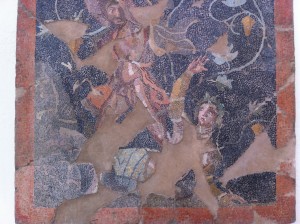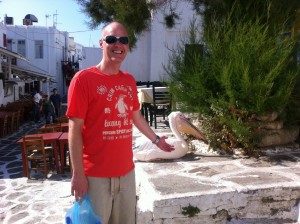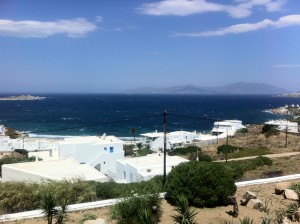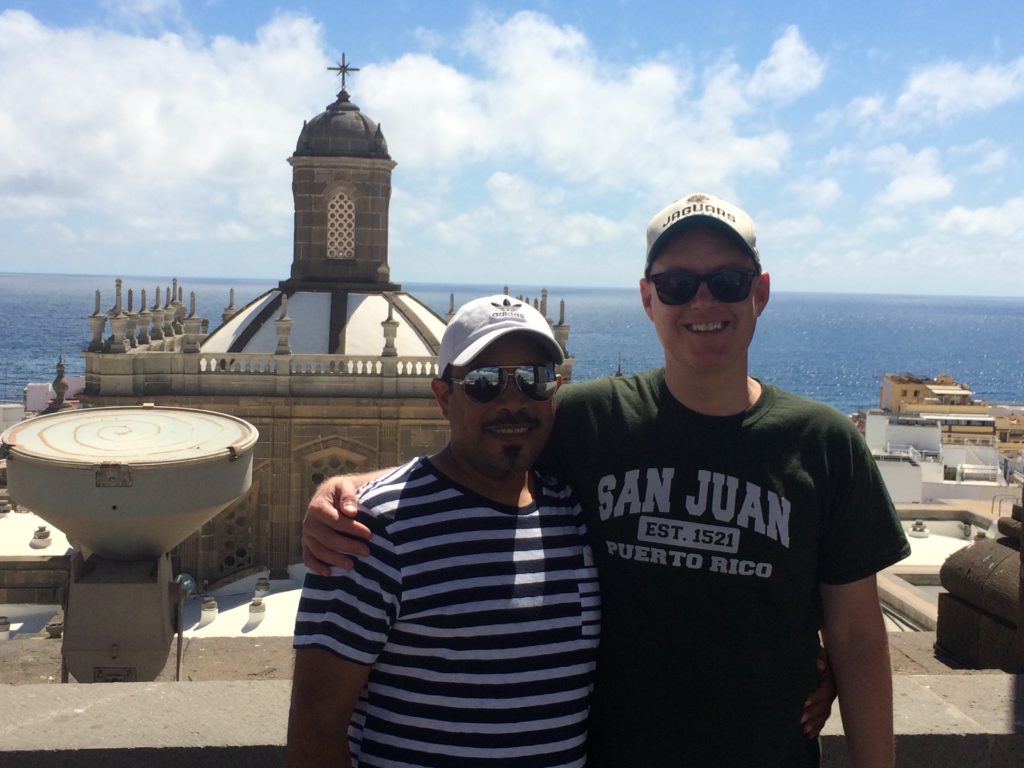
My husband and I met our German friends in Gran Canaria for our annual summer vacation. Here we are atop the 16th century Catedral de Santa Ana in the old district of Las Palmas, where you can see the cathedral’s cimborrio (cupola) and the nearby Atlantic Ocean in the background.
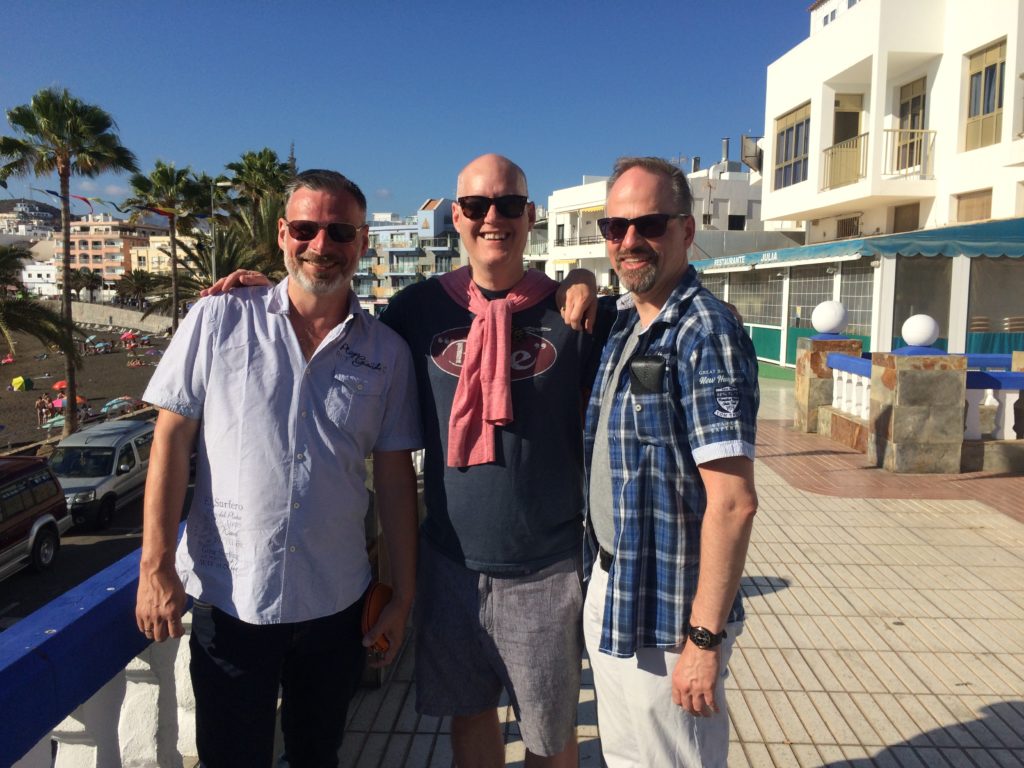
And here’s me with our German friends (l to r) Thorsten and Jurgen at the Plaza Las Maranuelas in the south coast village of Arguineguin where we sought out a fish restaurant for dinner that was closed for the St. James Day festival.
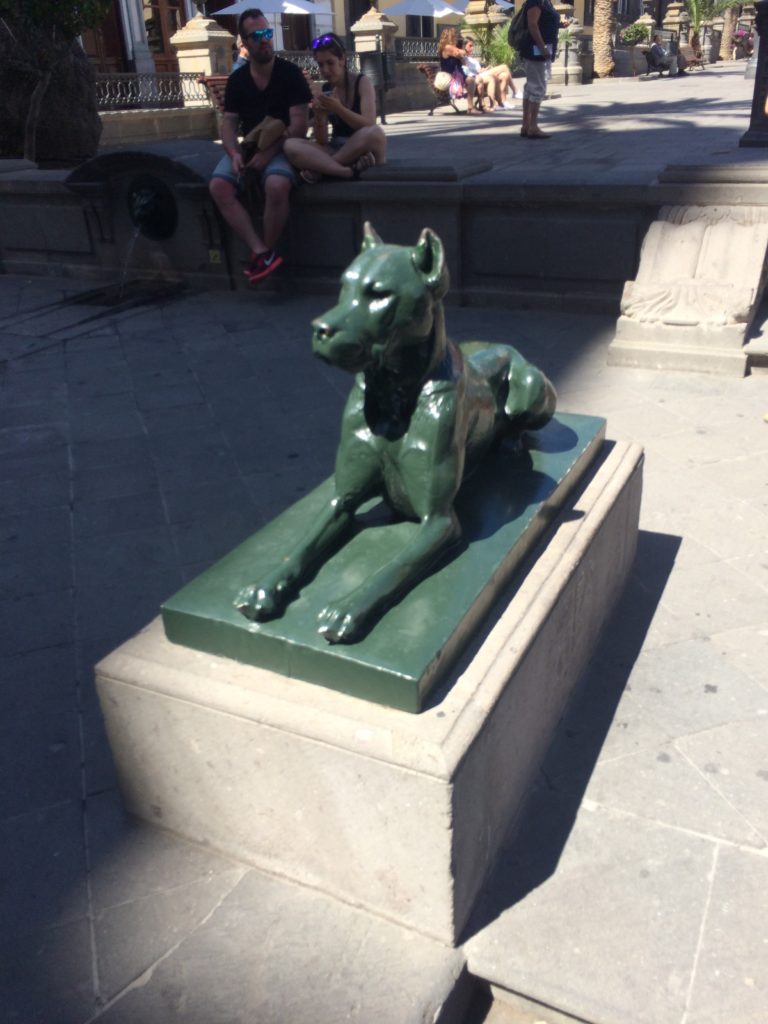
I found some statues of interest in Las Palmas. At the Plaza de Santa Ana, there are eight dogs guarding the cathedral, a nod to the island’s history. Canary comes from the Latin: insula canaria – island of dogs. Gran Canaria was named by the Romans, and the historian Pliny the Elder claimed that it was inhabited by “multitudes of dogs of very large size,” which is something of a mystery. There certainly are no longer wild dogs living on the Canary Islands, and it has been speculated that the association with dogs may have been a misappropriation refering to the barking monk seal, though monk seals are no longer found on the islands either. The Greeks called the Guanche natives “the dog-headed ones,” which could have been a reference to a priestly worship of dogs (similar to the Egyptians).
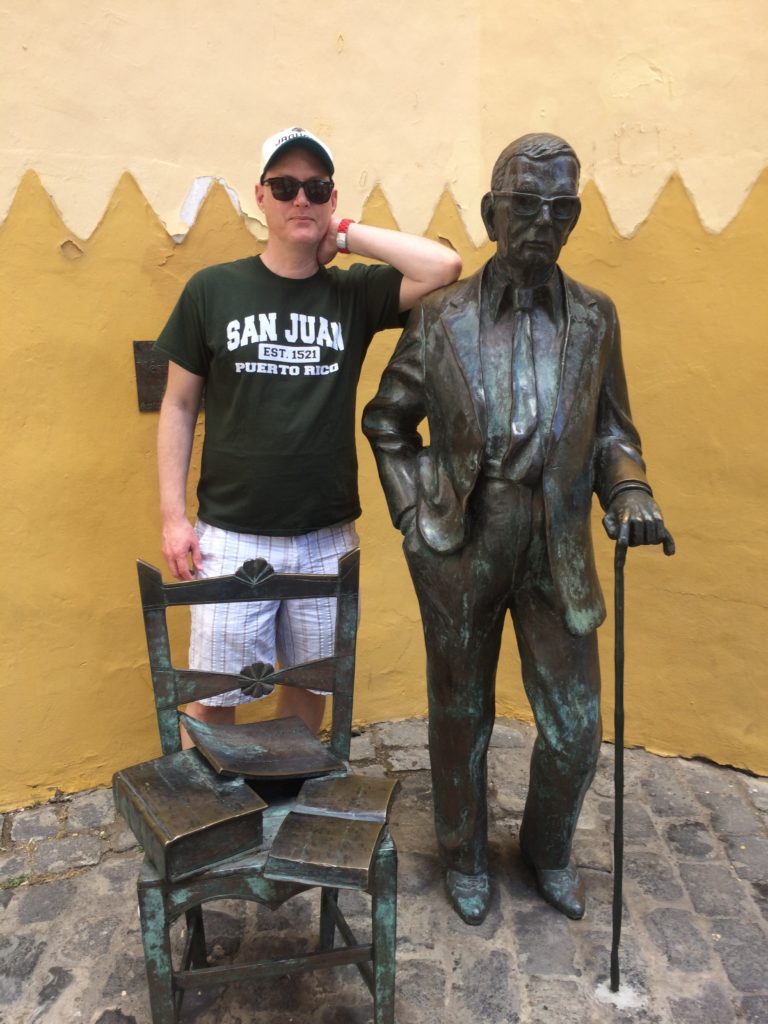
Of course, I could not resist posing with a statue of a local literary icon: Nestor Alamo. who was a musical composer and writer. This is also in the old district of Las Palmas.
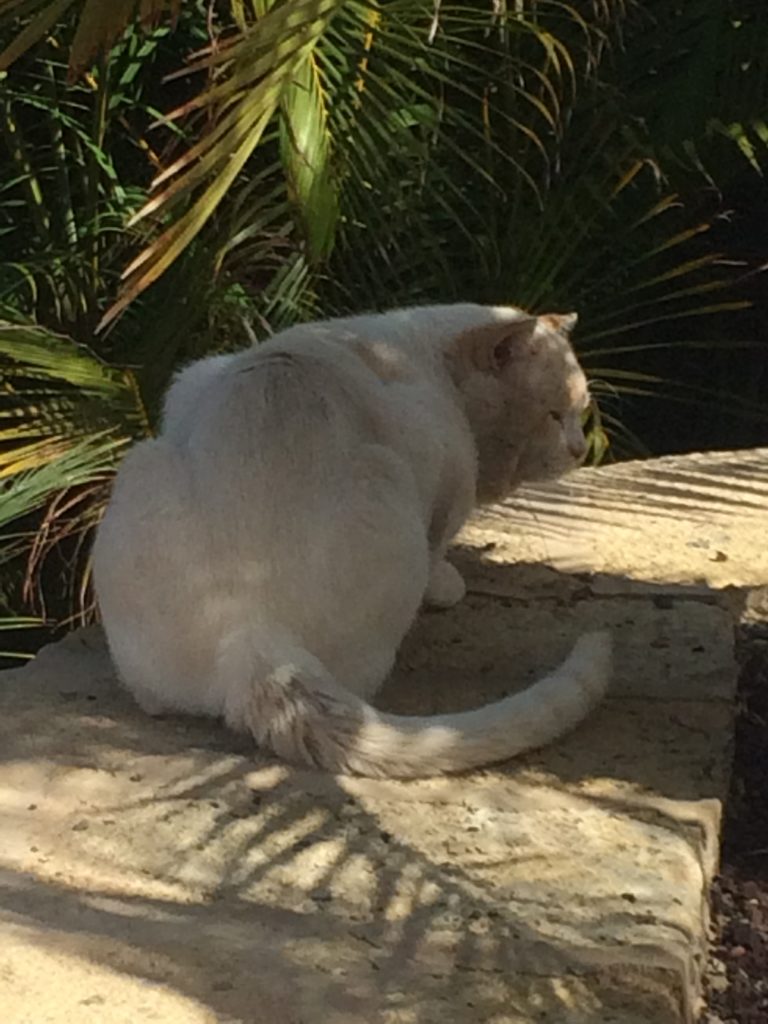
Meanwhile, we saw many more cats than dogs. This fellow was a resident of our hotel and liked bossing his companions around.
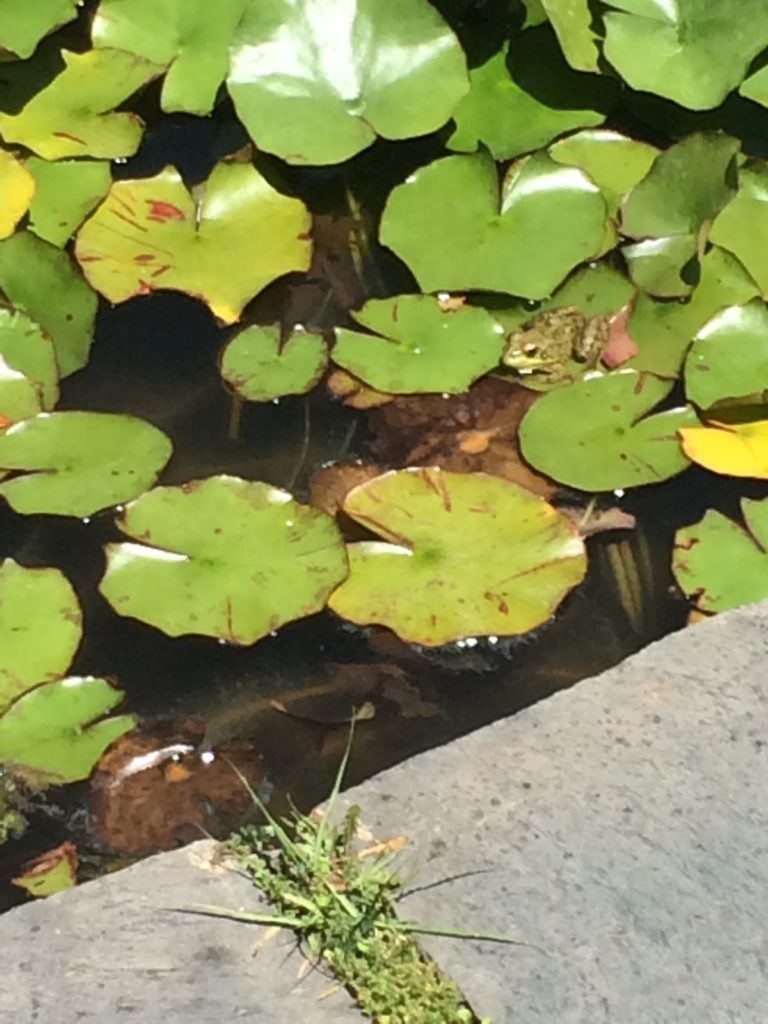
The Jardín Botánico Canario Viera y Clavijo, near Las Palmas, is Spain’s largest public garden and I’d say a must see. I took a ton of photos and chose to share this close-up shot from the lily pad pool.
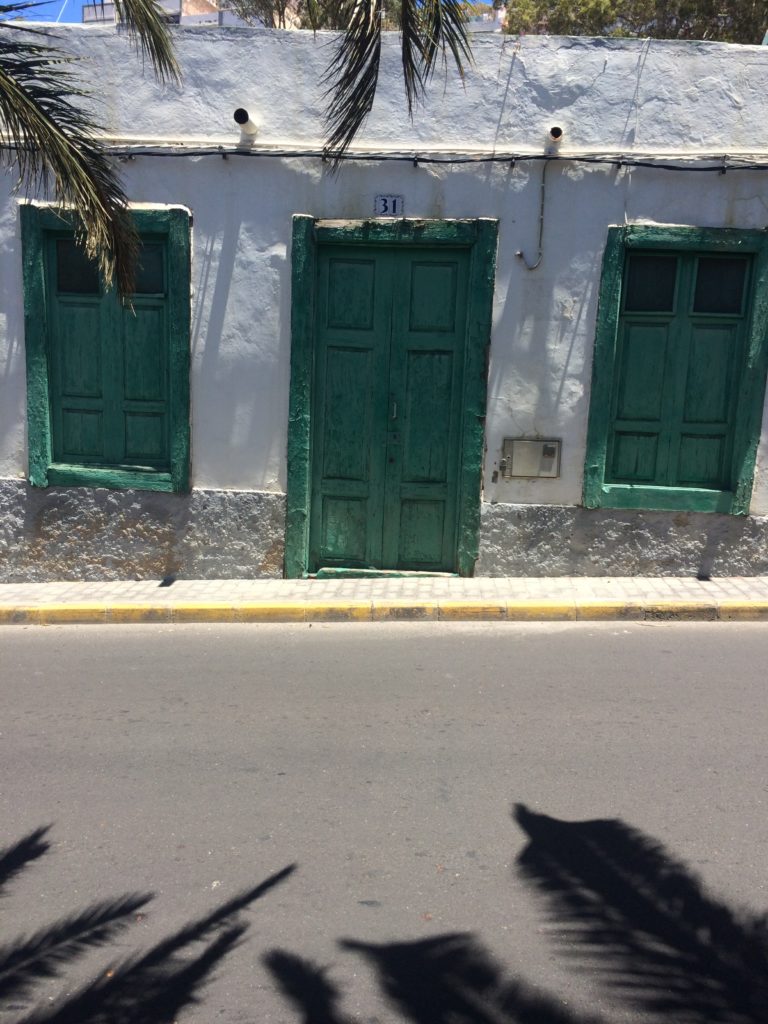
We visited the village of Agaete on the north coast, which was settled in the 16th century and retains much of its original Spanish colonial architecture.
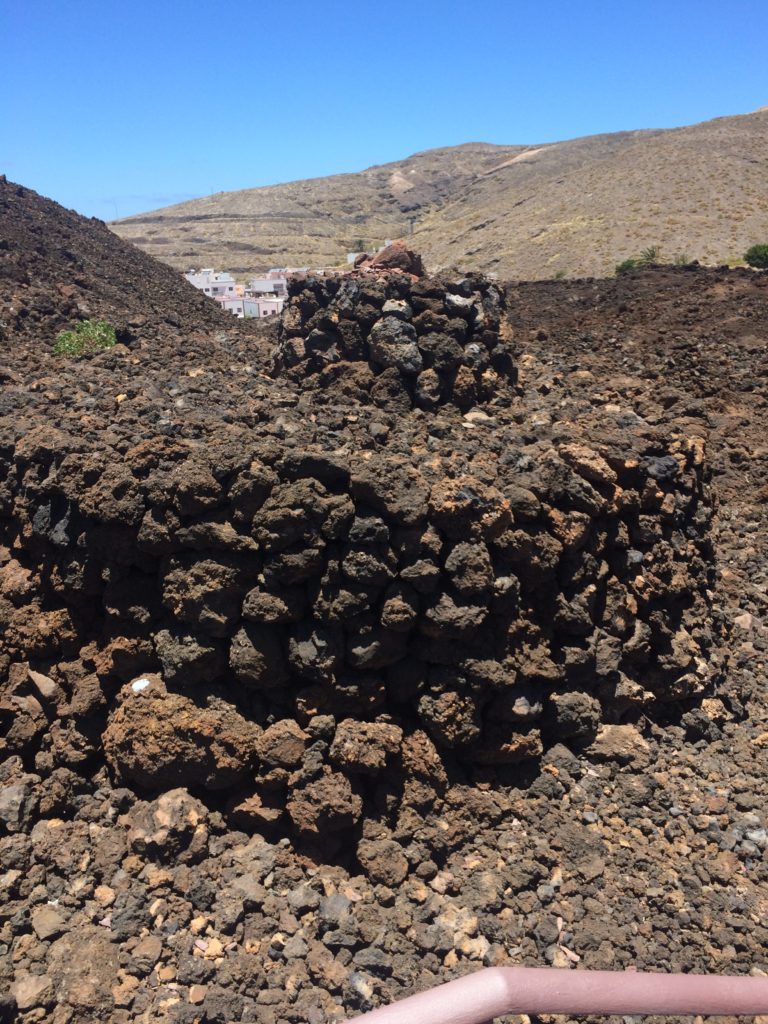
Also at Agaete, an important archeological site known as Maipes, the Valley of Death. Reconstructed stone tombs on a Guanche burial site where the dead were mummified and laid within circular or boat-shaped mounds of volcanic rock.
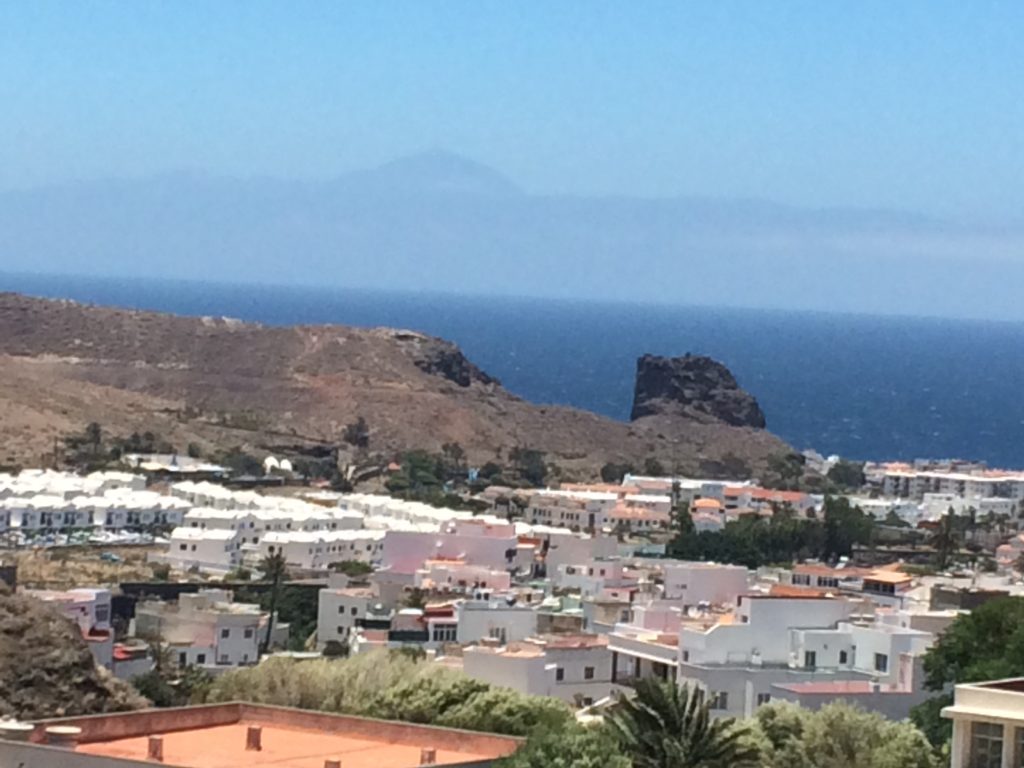
View from above Agaete. The faint silhouette across the water is visible most days looking out from the northwestern coast. It’s the island of Tenerife with its prominent volcanic mountain Pico de Teide. Snow-capped, Pico de Teide is the third tallest volcano in the world and the highest mountain in the Atlantic Ocean.
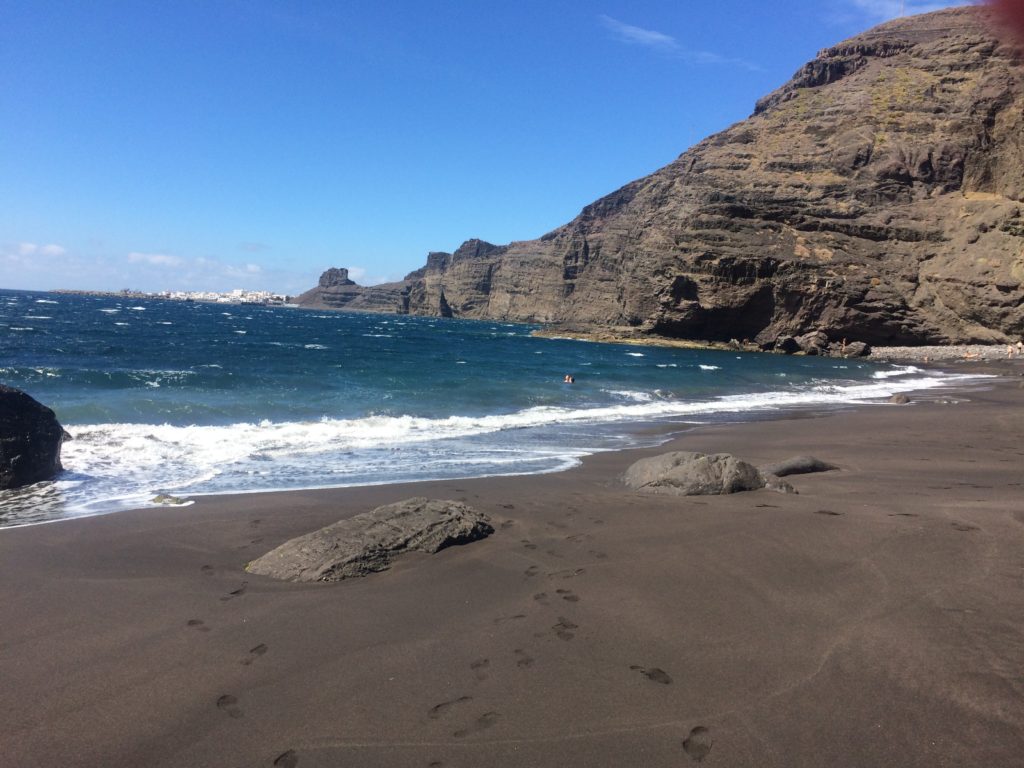
One of the highlights of the trip for me was discovering remote Guayedra Beach on the western coast of the island. It’s only accessible via a short but fairly rugged hike off the road, and the reward was spectacular. I had hoped to find the even more remote Gui Gui beach during the trip, though the idea didn’t catch on with my companions. That beach requires a two and a half hour hike over very difficult terrain. Maybe next visit.
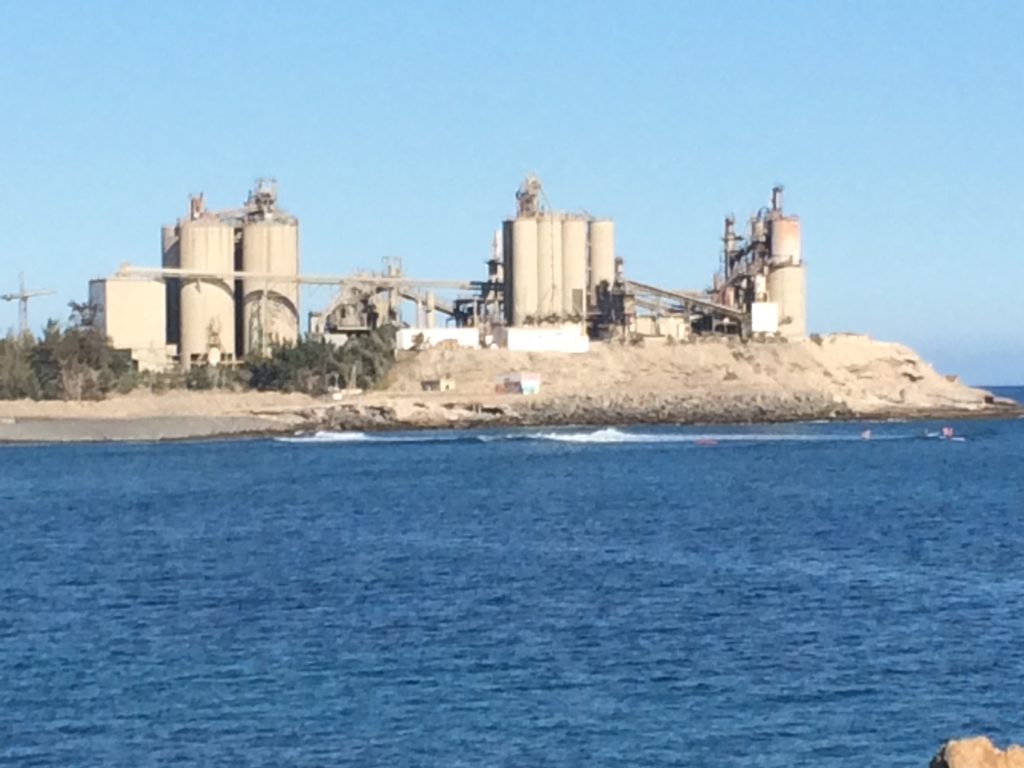
The Fabrica CEISA, a cement factory, is a strange industrial landmark that is perenially in view around the southeastern coast of the island. A reminder you’re not far aloft from the modern world despite the island’s wide swaths of protected parkland and its quaint seaside villages.
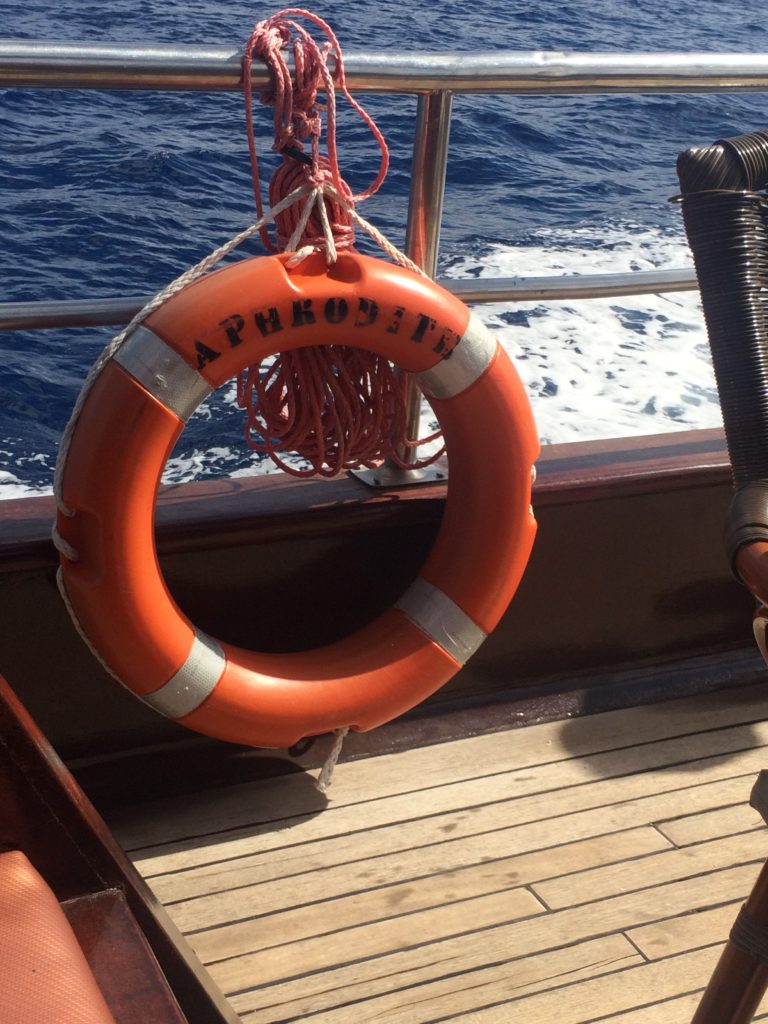
We took a day-trip aboard a “Turkish gulet” called The Aphrodite, and I failed to take good photos of the old-fashioned, wooden sailboat, but here’s one.

And, on that sail, we saw dolphins, which nearly eluded me completely photo-wise, but here’s a middling shot.
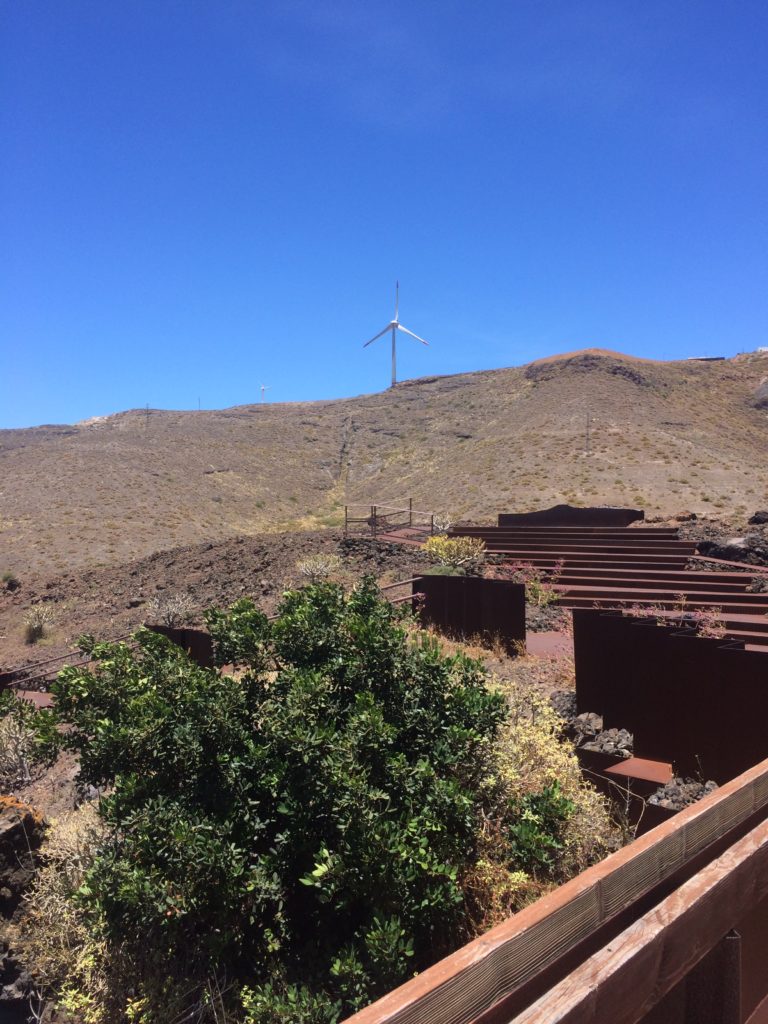
Wind turbines are ubiquitous on the island, and quite a reasonable way to generate energy on one of the windiest islands in the world. Surprisingly, wind energy is only used marginally at present, but there’s a project underway to better harness the output of Gran Canaria’s wind turbines using its inland reservoirs as something like storage batteries, however that’s done.
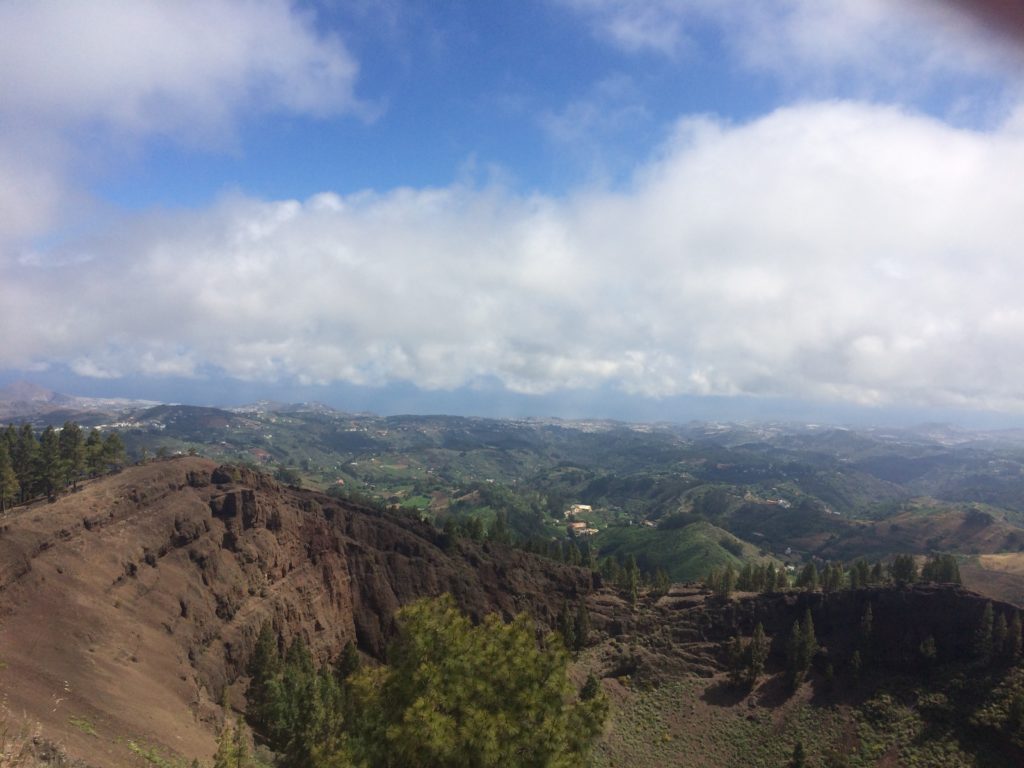
At an overlook to the Caldera de Tejeda, a volacnic crater.
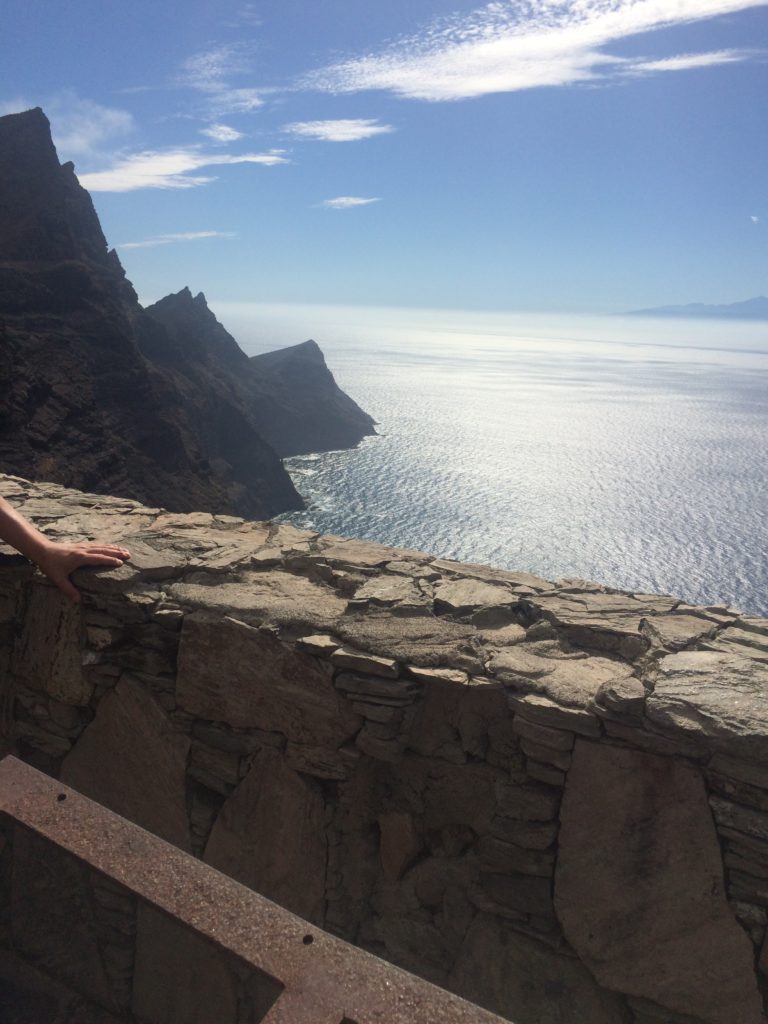
Another breath-taking vista is the Mirador del Balcon, which was built on a jutting cliff on the western coast of Gran Canaria.
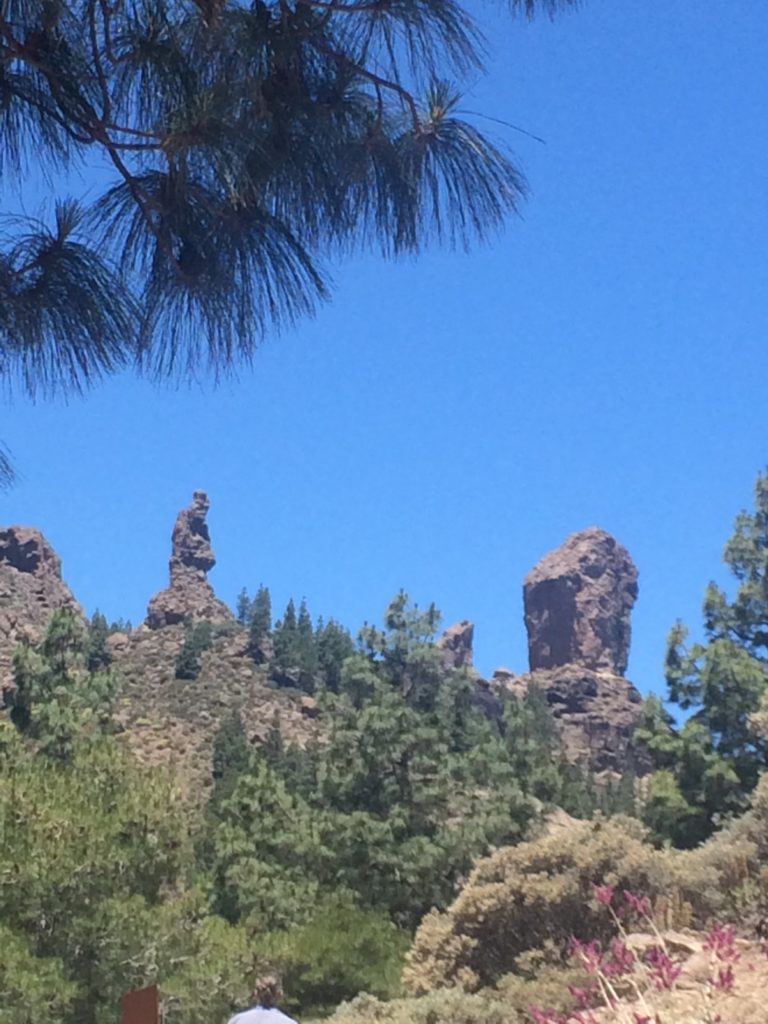
The most famous landmark of the island is a sacred rock formation known as Roque Nuble, atop one of the highest points in the island. The lesser rock to the left is called Friar’s Rock due to its unique shape and seeming protective gaze toward Roque Nuble. Here we were at the foot of the trail up to the top.
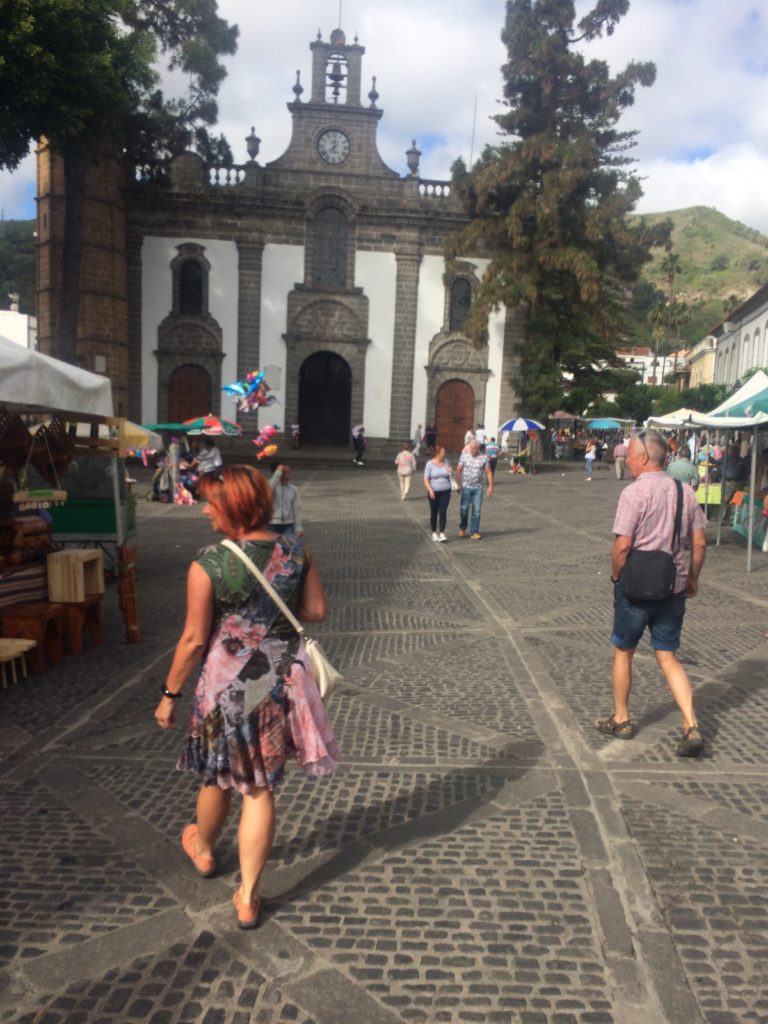
We visited a popular market in the beautiful mountain village of Teror. Market stalls are set up around the town’s beloved basilica Nuestra Senora del Pino, a tribute to the Virgin Mary. I bought a locally-made spicy mojo which is used as a seasoning for the traditional dish papas arrugadas (wrinkled potatoes). We ate a lot of those at tapas restaurants and elsewhere.
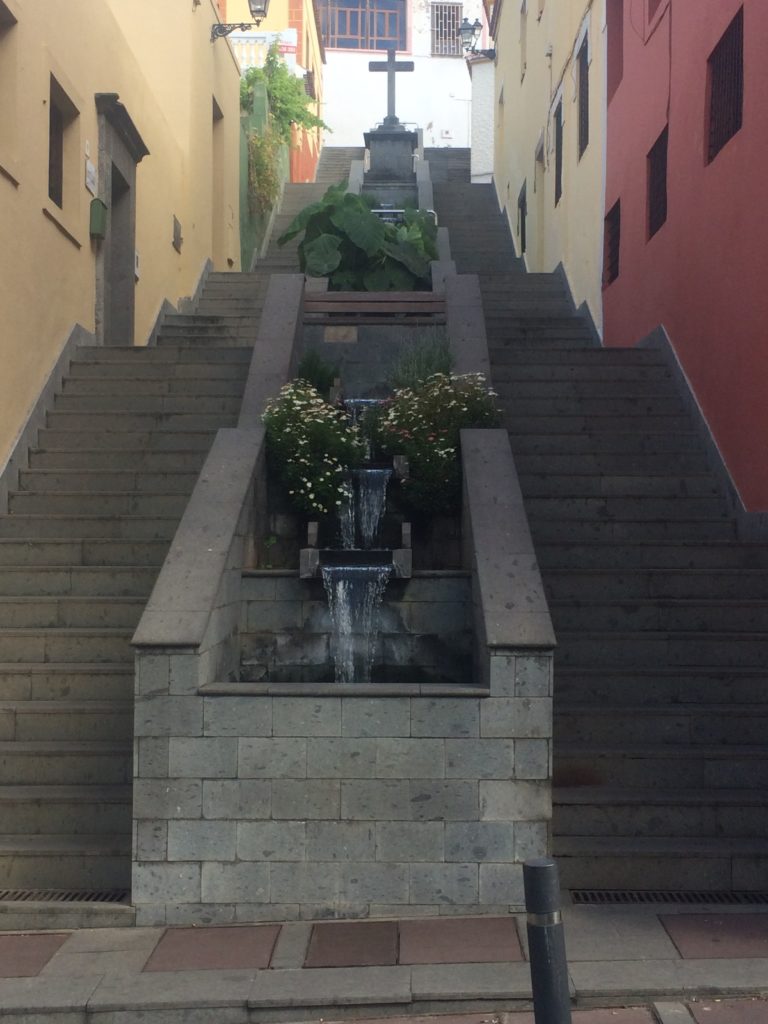
We found this charming fountain stairway while walking around Teror.
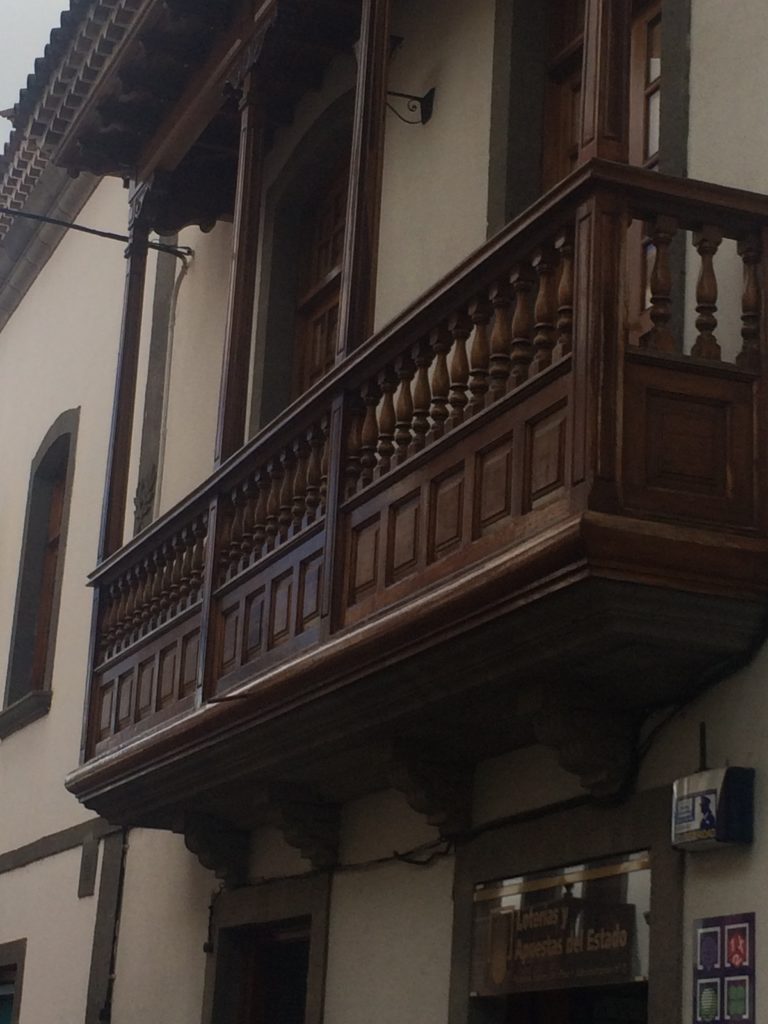
Once again, not showing off my best photographic skill, but I took some shots of the characteristic wooden balconies of Teror.
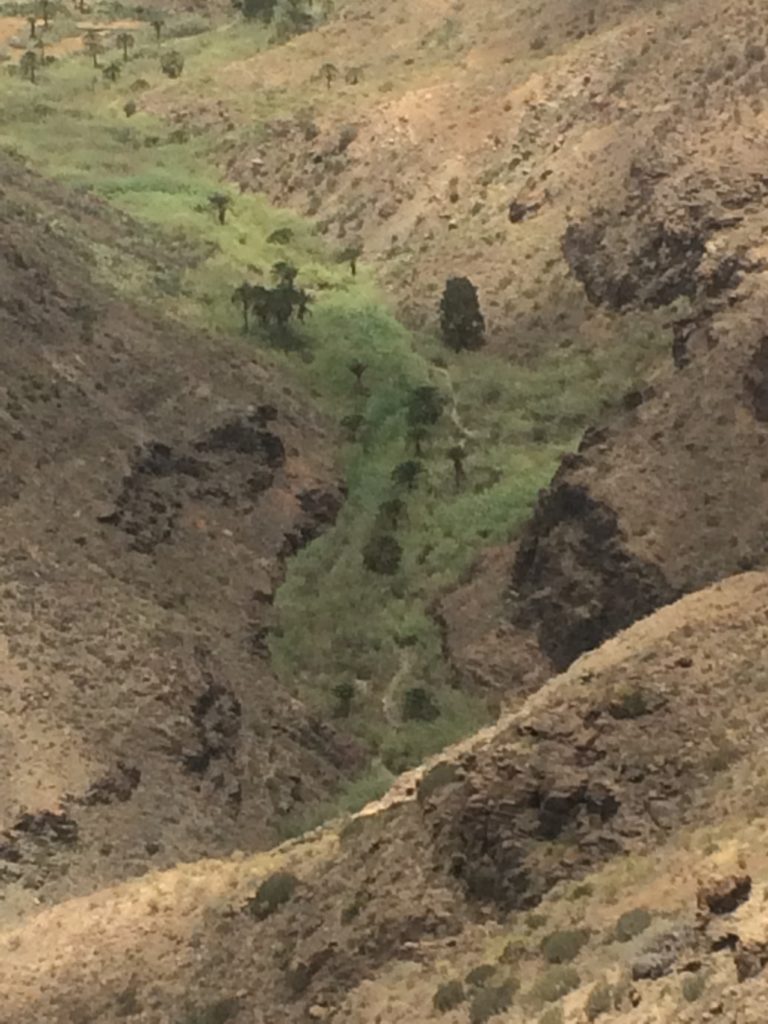
Driving through the central mountains, we came to the Fataga Valley, which is something like a miniature Grand Canyon, though it’s too dry to have a river in its center, just some shrubby greenery and palm trees that survive from the moisture in the air. It only rains five days of the year on average.
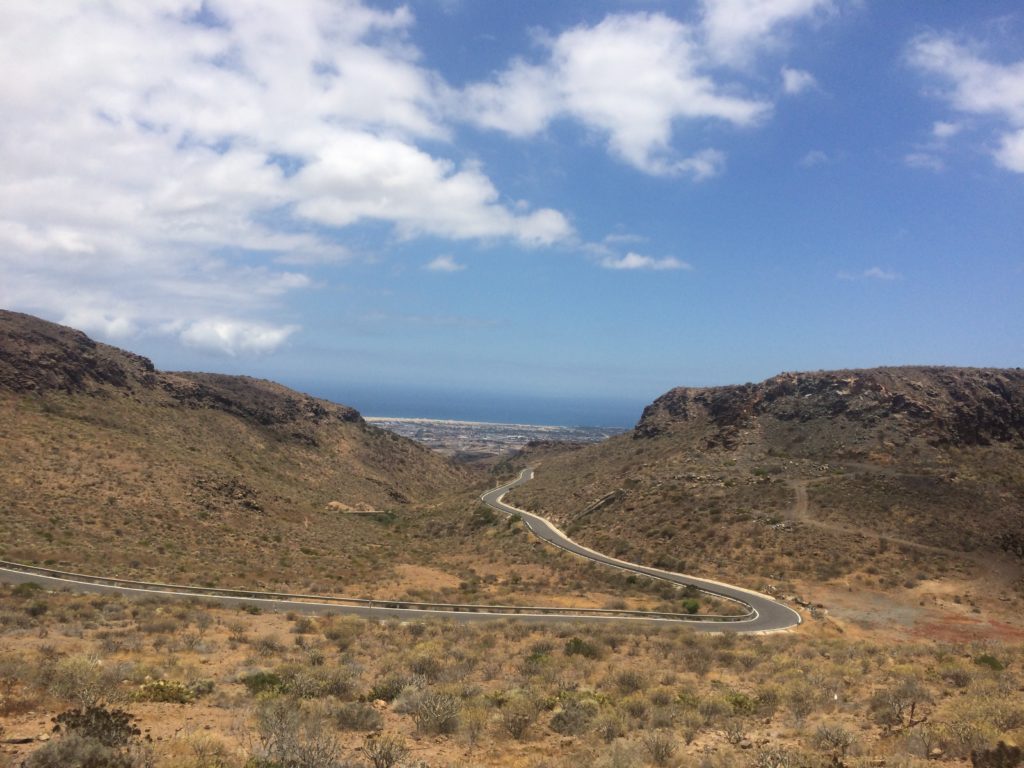
Part of the zig zag road we took down from Fataga to Maspalomas.
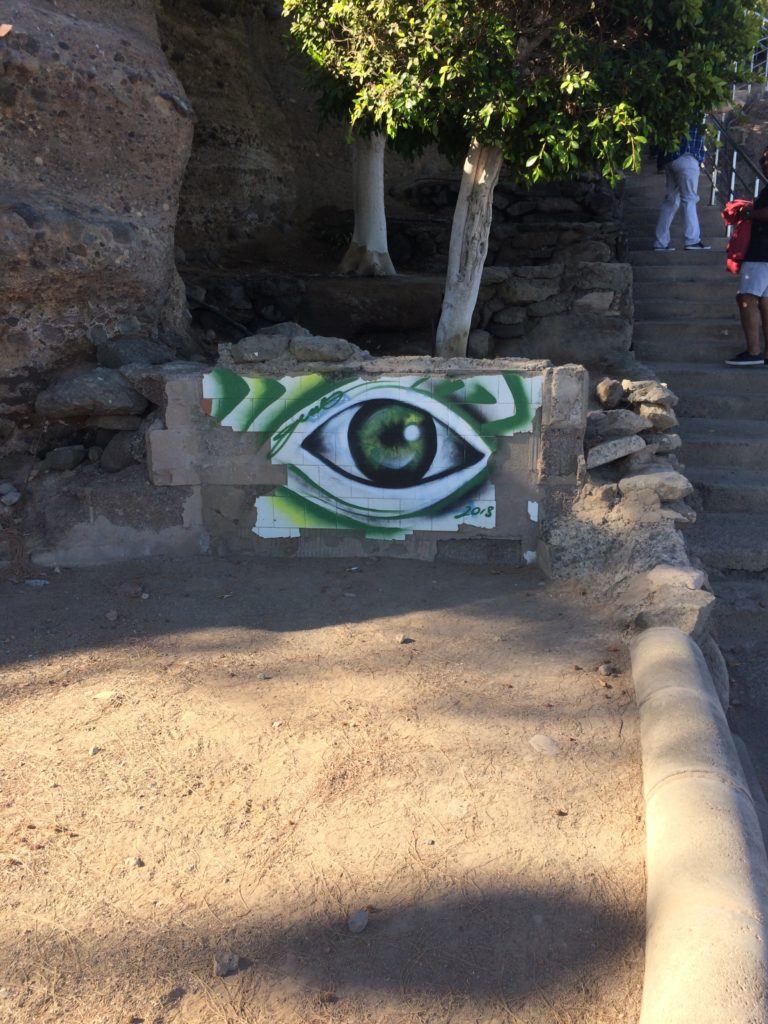
Just some street art I found while walking through Arguineguin.

Could not resist snapping a shot of this fountain statue near Lopesan Shopping Center in Meloneras. I didn’t find any information about it, but it could be a representation of Triton, son of Poseidon and Amphitrite, as there’s a famous statue of him in Las Palmas.
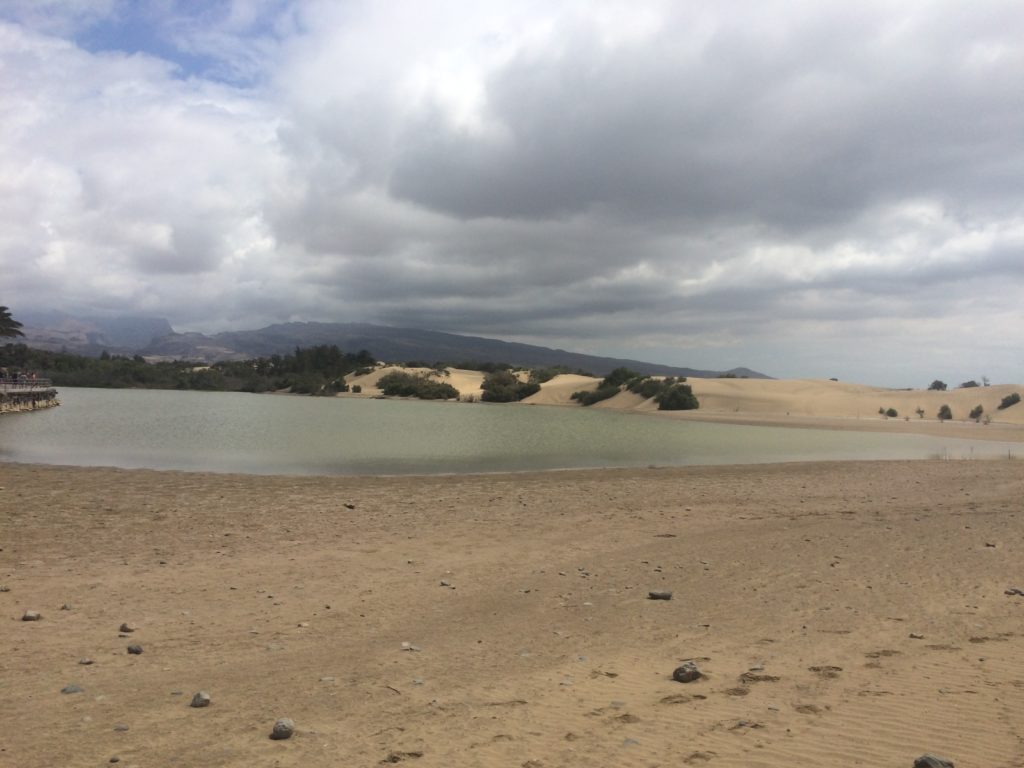
We hiked the trail through the famous Maspalomas dunes on an overcast but very hot day. You can take camel rides through the dunes as well, which would have been a must more pleasant way to travel.
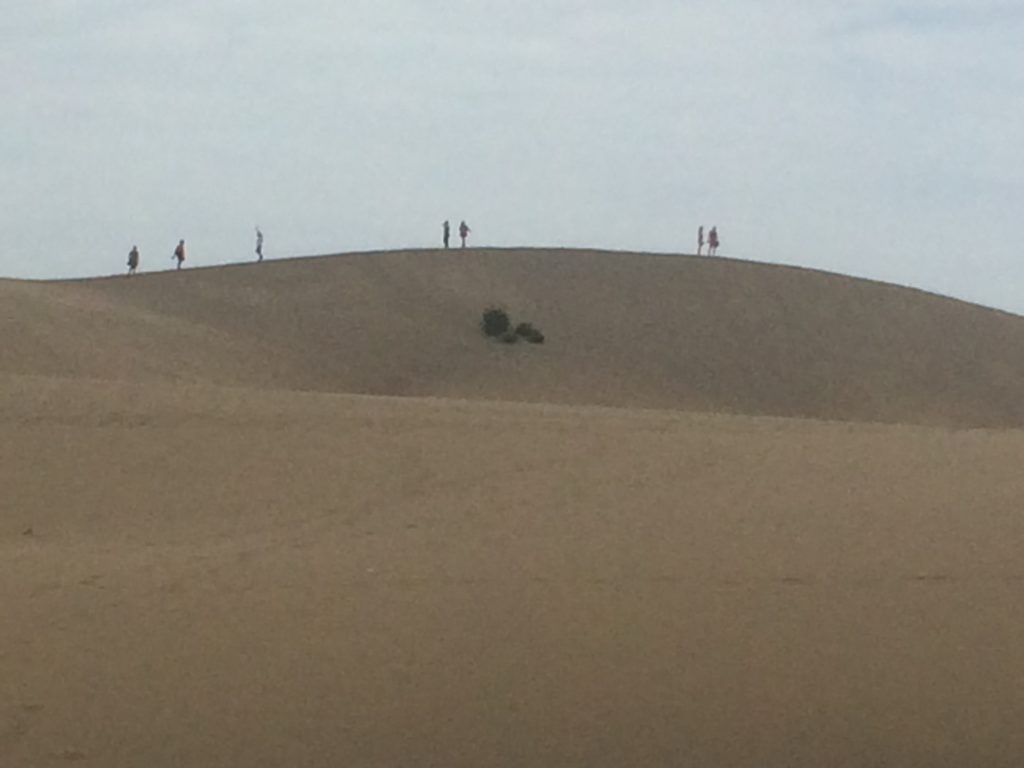
Here you can see folks who climbed to the top of one of the dunes.
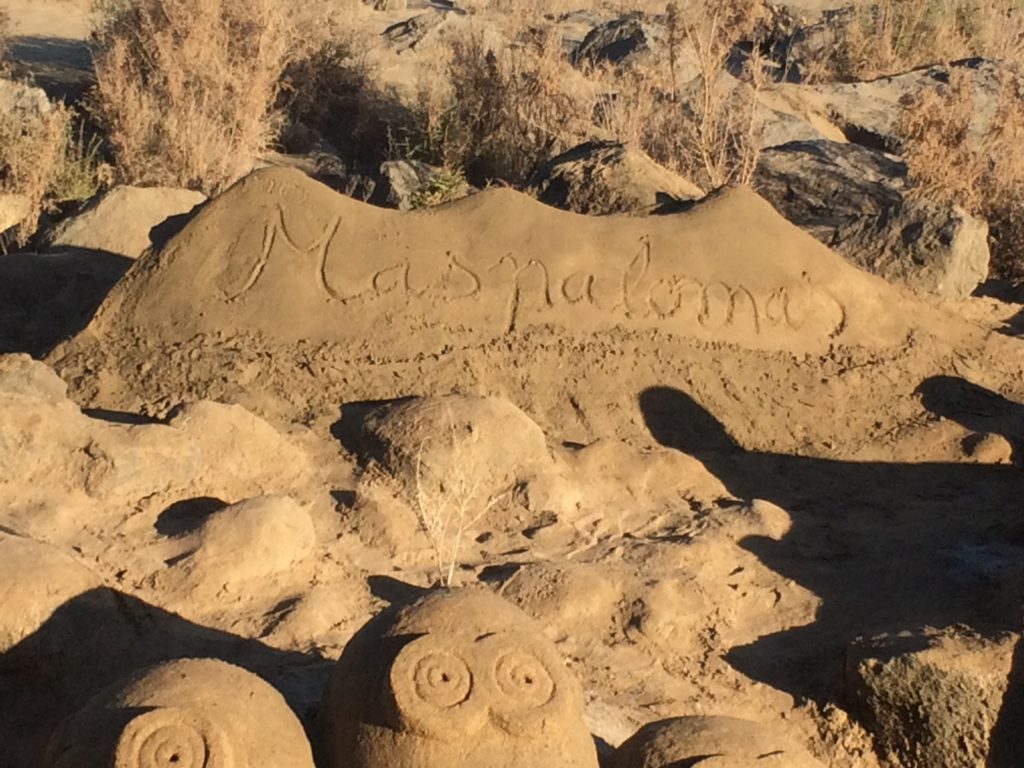
We walked the boardwalk along Maspalomas beach, which is a favorite spot for artists to make sandcastles.
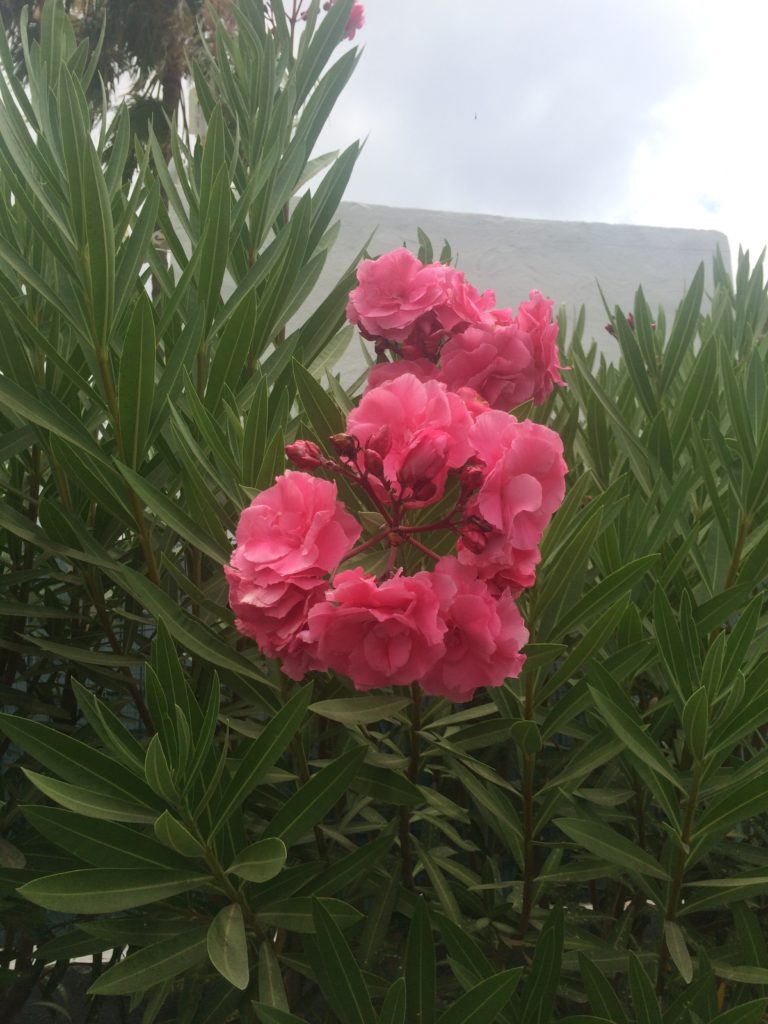
Pink peonies were abundant throughout the Meloneras district where we stayed.

And that’s my trip to Gran Canaria. Amazing scenery, I learned a thing or two, and had a great time with my husband and our friends. 🙂


